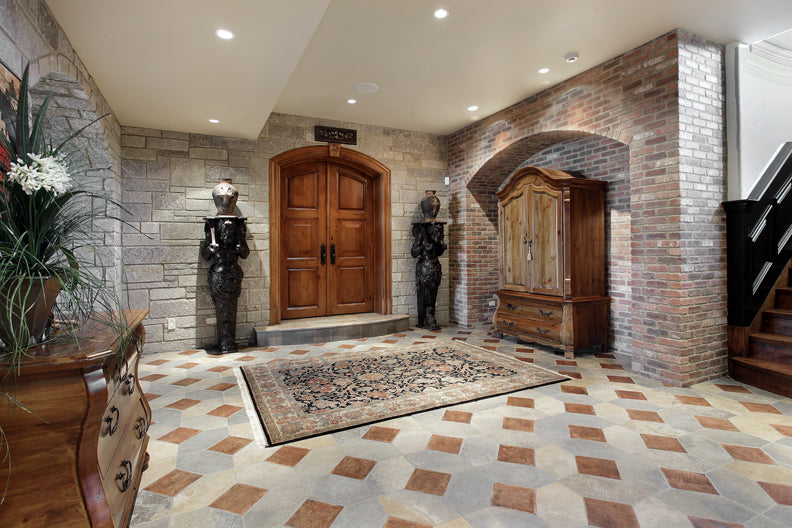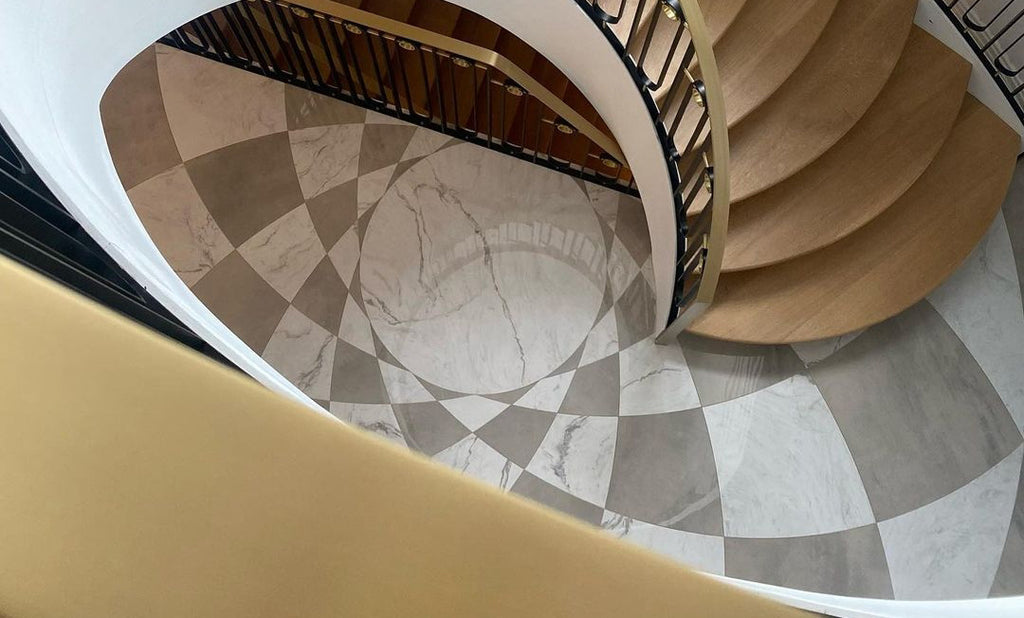
5 Travertine and Limestone Tile Design Ideas to Inform Your Remodeling Decisions
There is nothing that beats travertine for “Old World” charm in remodeling. Travertine tile patterns are as old as the Roman era, where travertine was known as “lapis Tiburtinus,” since it was taken from Tiber (a town now known as Tivoli in modern times). While natural travertine tile ideas are beautiful in their buildings, however, new, modern, filled, honed, stone tiles can work around the kitchen and bathrooms in any high-end home or hotels. Businesses like the veined travertine because it is similar to marble, but with a lower price point making it ideal to cover large areas. Take a look at some of the following travertine tile design ideas to learn more about how I expand the use of travertine into modern applications.
1. Create New Patterns from Old Traditions
The Romans used white travertine in between bricks in the Colosseum as it was stronger than brick. Travertine comes in more colors than white, though. This makes it easy to create checkerboard patterns for modern floors without being overwhelmed with travertine. Take a look at this tile design made with Noce and black tile in a basketweave pattern.

Mosaic Border - View Details>>
The Noce tile creates quite a rusty contrast to the black accents. You can also use the white travertine tiles with other tile materials and colors to create interesting and unusual checkerboard or herringbone patterns too.
2. Incorporate Earthy, Natural, Tones with limestone
Travertine is a layered rock created when limestone is put under pressure for thousands of years. Like limestone, it can come in white, but it also comes in rich earthy tones from beige to red. There are also warm golds. With this type of palette, it’s easy to create that Italian rustic look that is so popular in kitchens today that make a kitchen literally glow with earthen comfort. If you just used one stone for the floor, beige or gold travertine can make a dramatic statement in your luxury kitchen.

Antique Stone - View Details>>
Imagine the same design using a rustic red stone instead. It will make you feel like you’re living in Tuscany, Italy. If that’s too much of a design statement, consider using the red as a modern kitchen backsplash or in a checkerboard pattern with the rustic gold.
3. Go with the Grain (or not)
For those with more subtle tastes, travertine offers even more design possibilities. Tiles that have veins can often have subtle effects, like a wood grain. The Roman tile can be laid out in the same direction of the grain to give a flowing look to the floor or surface covered. If you want to get a hatched look you can also just use the tiles with the “grain” in a crosshatch pattern for an overall herringbone thatched look. Use subway tiles with the grain all in one direction for something truly unique, subtle, and modern. Here is an example of a marble herringbone backsplash, but it could easily be fitted to a floor with travertine or limestone tile.

Travertine Tile - View Details>>
4. Imitate Marble in Large Areas
The same town of Tivoli that was famous in the Roman era as Tiber (where travertine got its Roman name) is still actively quarrying travertine there. It is cut up in large blocks to retain the vein so that it can be used in tiles that have a marble look. In fact, travertine is so synonymous with marble that people think travertine is the commercial brand name for a fancy marble. However, it really is a different material. Marble does come from travertine, but only after thousands of more years of heat and pressure, much the same way carbon and a diamond are very different materials even though they are related. Tiles that look like marble come with names like Yosemite and Silver. It can be easy to see how these would make a lovely accent wall in a bathroom or hotel lobby.

Porcelain Waterjet Tile - View Details >>
5. Pick a Surface from Sure-Grip to Slippery Smooth
Travertine comes from the calcareous buildup of lime in the hot spring areas over a millennium of time. So, it’s not hard to see why it is also a favorite for pool decks and outdoor patios. Travertine can come in filled or unfilled. Sealed travertine is waterproof, otherwise it is a rather porous stone. Honed travertine is ground down further to a smooth finish. However, natural travertine is rough in texture and offers a sure-grip surface around a pool, like the one around this reef mosaic pool. It keeps people from slipping and sliding when around water. However, polished and honed tiles can be as smooth as marble to see every design intricacy on the surface.

Exterior Tile - View Details >>
